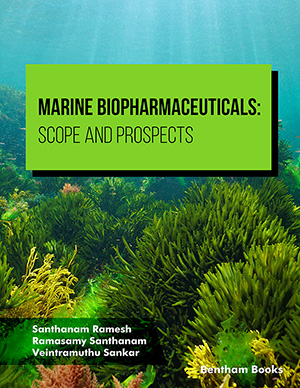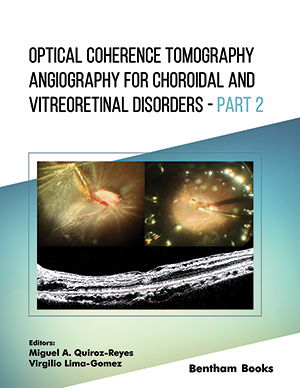[1]
Park JH, Kim YI, Lim YC. Clinical outcomes of treatment for intracranial aneurysm in elderly patients. J Cerebrovasc Endovasc Neurosurg 2014; 16: 193-9.
[2]
Brawanski N, Kunze F, Bruder M, et al. Subarachnoid hemorrhage in advanced age: Comparison of patients aged 70–79 years and 80 years and older. World Neurosurg 2017; 106: 139-44.
[3]
Zheng K, Zhao B, Tan XX, et al. Comparison of aggressive surgical treatment and palliative treatment in elderly patients with poor-grade intracranial aneurysmal subarachnoid hemorrhage. BioMed Res Int 2018; 2018: 5818937.
[4]
Proust F, Gérardin E, Derrey S, et al. Interdisciplinary treatment of ruptured cerebral aneurysms in elderly patients. J Neurosurg 2010; 112: 1200-7.
[5]
Rosengart AJ, Schultheiss KE, Tolentino J, Macdonald RL. Prognostic factors for outcome in patients with aneurysmal subarachnoid hemorrhage. Stroke 2007; 38: 2315-21.
[6]
Degos V, Gourraud PA, Tursis VT, et al. Elderly age as a prognostic marker of 1-year poor outcome for subarachnoid hemorrhage patients through its interaction with admission hydrocephalus. Anesthesiology 2012; 117: 1289-99.
[7]
Bekelis K, Gottlieb D, Su Y, et al. Surgical clipping versus endovascular coiling for elderly patients presenting with subarachnoid hemorrhage. J Neurointerv Surg 2016; 8: 913-8.
[8]
Awe OO, Gonzalez LF, Hasan D, Maltenfort M, Rossenwasser R, Jabbour P. Treatment outcome of aneurysmal subarachnoid hemorrhage in patients aged 70 years and older. Neurosurgery 2011; 68: 753-8.
[9]
Bekelis K, Gottlieb DJ, Su Y, Lanzino G, Lawton MT, MacKenzie TA. Medicare expenditures for elderly patients undergoing surgical clipping or endovascular intervention for subarachnoid hemorrhage. J Neurosurg 2017; 126: 805-10.
[10]
Hoh BL, Chi YY, Dermott MA, Lipori PJ, Lewis SB. The effect of coiling versus clipping of ruptured and unruptured cerebral aneurysms on length of stay, hospital cost, hospital reimbursement, and surgeon reimbursement at the University of Florida. Neurosurgery 2009; 64: 614-21.
[11]
Chen S, Guo X, Yu S, Zhou Y, Li Z, Sun Y. Metabolic Syndrome and Serum Liver Enzymes in the General Chinese Population. Int J Environ Res Public Health 2016; 13: 223.
[12]
Kunutsor SK, Seddoh D. Alanine aminotransferase and risk of the metabolic syndrome: A linear dose-response relationship. PLoS One 2014; 9: e96068.
[13]
Goessling W, Massaro JM, Vasan RS, D’Agostino RB Sr, Ellison RC, Fox CS. Aminotransferase levels and 20-year risk of metabolic syndrome, diabetes, and cardiovascular disease. Gastroenterology 2008; 135: 1935-44.
[14]
Alberti KG, Eckel RH, Grundy SM, et al. Harmonizing the metabolic syndrome: A joint interim statement of the international diabetes federation task force on epidemiology and prevention; national heart, lung, and blood institute; american heart association; world heart federation; international atherosclerosis society; and international association for the study of obesity. Circulation 2009; 120: 1640-5.
[15]
Kawamoto R, Ninomiya D, Senzaki K, Kumagi T. Alanine Aminotransferase and total bilirubin are synergistically associated with metabolic syndrome among middle-aged and elderly japanese women. Metab Syndr Relat Disord 2017; 15: 407-15.
[16]
Xuebing Zhang, Yiming Mu, Wenhua Yan, Jianming Ba, Hongmei Li. Alanine aminotransferase within reference range is associated with metabolic syndrome in middle-aged and elderly chinese men and women. Int J Environ Res Public Health 2014; 11: 12767-76.
[17]
Kim W, Flamm SL, Di Bisceglie AM, Bodenheimer HC. Serum activity of alanine aminotransferase (ALT) as an indicator of health and disease. Hepatology 2008; 47: 1363-70.
[18]
Liu Z, Que S, Xu J, Peng T. Alanine aminotransferase-old biomarker and new concept: A review. Int J Med Sci 2014; 11: 925-35.
[19]
Connolly ES Jr, Rabinstein AA, Carhuapoma JR, et al. Guidelines for the management of aneurysmal subarachnoid hemorrhage: A guideline for healthcare professionals from the American Heart Association/American Stroke Association. Stroke 2012; 43: 1711-37.
[20]
Steiner T, Juvela S, Unterberg A, Jung C, Forsting M, Rinkel G. European Stroke Organization guidelines for the management of intracranial aneurysms and subarachnoid haemorrhage. Cerebrovasc Dis 2013; 35: 93-112.
[21]
Mocco J, Ransom ER, Komotar RJ, et al. Preoperative prediction of long-term outcome in poor-grade aneurysmal subarachnoid hemorrhage. Neurosurgery 2006; 59: 529-38.
[22]
Schuss P, Hadjiathanasiou A, Borger V, Wispel C, Vatter H, Güresir E. Poor-grade aneurysmal subarachnoid hemorrhage: factors influencing functional outcome - A single- center series. World Neurosurg 2016; 85: 125-9.
[23]
van den Berg R, Foumani M, Schröder RD, et al. Predictors of outcome in world federation of neurologic surgeons grade v aneurysmal subarachnoid hemorrhage patients. Crit Care Med 2011; 39: 2722-7.
[24]
Yue Q, Liu Y, Leng B, et al. A prognostic model for early post-treatment outcome of elderly patients with aneurysmal subarachnoid hemorrhage. World Neurosurg 2016; 95: 253-61.
[25]
Sprung J, Gajic O, Warner DO. Review article: Age related alterations in respiratory function — anesthetic considerations. Can J Anaesth 2006; 53: 1244-57.
[26]
Ryttlefors M, Howells T, Ronne-Engström E, Nilsson P, Enblad P. Neurointensive care is justified in elderly patients with severe subarachnoid hemorrhage--an outcome and secondary insults study. Acta Neurochir (Wien) 2010; 152: 241-9.
[27]
Wachter D, Hans F, Kreitschmann-Andermahr I, Rohde V. Lower incidence of transcranial Doppler and symptomatic vasospasm after aneurysmal subarachnoid hemorrhage and aneurysm clipping in the elderly patient? Neurosurgery 2011; 69: 261-6.
[28]
Nakamura K, Okamura T, Kanda H, Hayakawa T, Okayama A, Ueshima H. The value of combining serum alanine aminotransferase levels and body mass index to predict mortality and medical costs: A 10-year follow-up study of national health insurance in shiga, Japan. J Epidemiol 2006; 16: 15-20.































